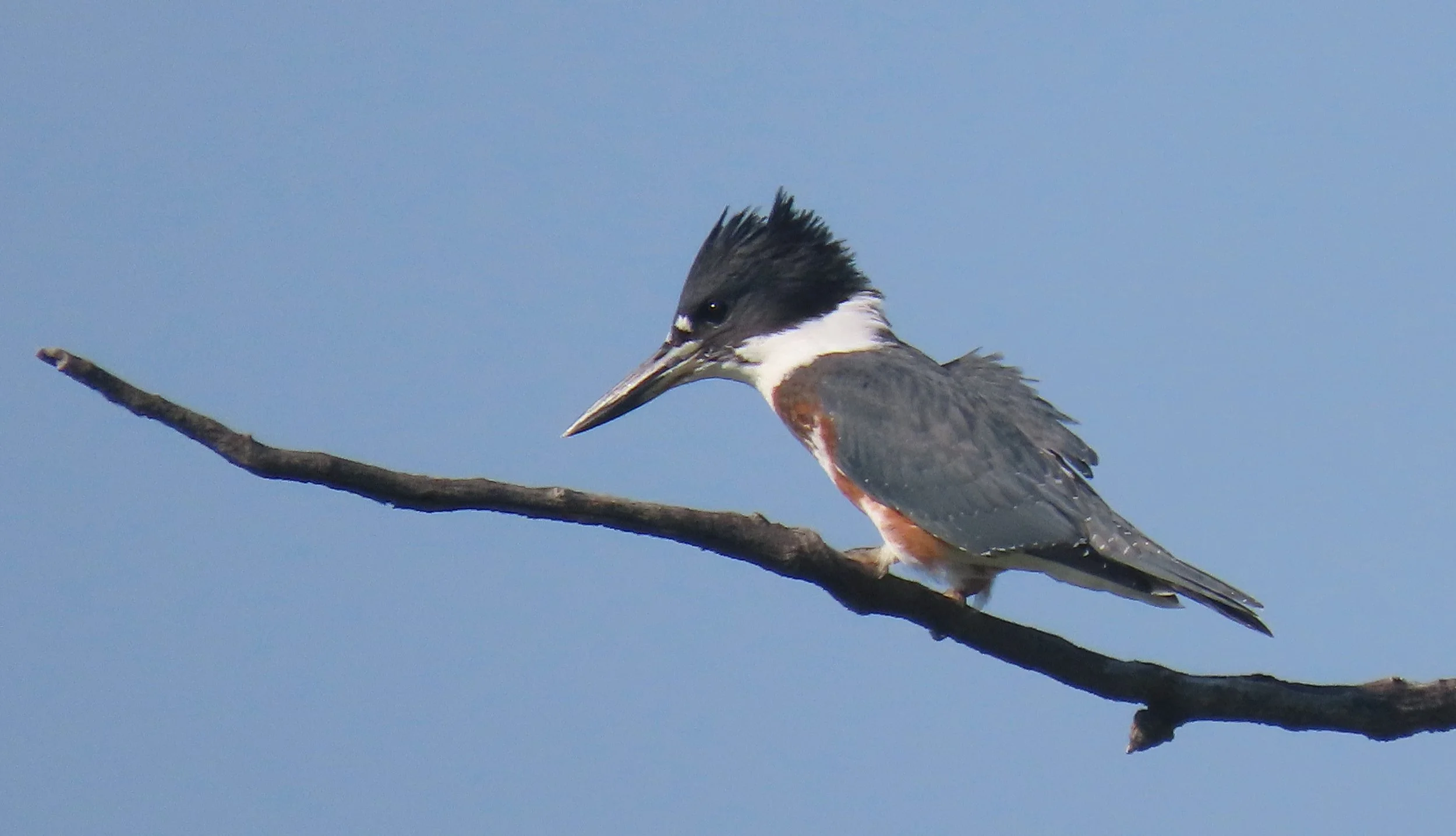Field Trip Recap: Sunset Walk at Douglass Park
words by Sammy Cabindol
On the evening of June 25, fifteen birders gathered at Douglass Park and eagerly grasped their binoculars in hopes of spotting some of the summer’s serene scenery and songs.
At the southwest end of the main lagoon, onlookers watched as the Barn Swallows whizzed overhead and skimmed the water’s surface. Suddenly, a Belted Kingfisher took flight and evaded the gazes of many in the group. Those who caught a glimpse reminisced on how there seemed to be fewer Belted Kingfishers in Chicago this year.
Belted Kingfisher. Photo by Randy Shonkwiler, Jackson Park, Aug. 28, 2021.
At the lagoon, they also identified Chicago’s two main gull species: Ring-billed Gull and American Herring Gull. When trying to discern between these adult gulls, there are several features to look for—their size, leg color, and beak. The Herring is much larger than the Ring-billed. Even juvenile Herring Gulls are as large as full adult Ring-billed Gulls.
When looking at their leg colors, the Herring have pink-colored legs whereas Ring-billed legs are yellow. The beak of a Herring Gull has a prominent red spot on its lower mandible. The Ring-billed Gull lacks this feature and instead has a black ring near the tip of its bill. The ring appears as a thick band when looking at a gull’s head in lateral, or side, view.
American Herring Gull. Photo by Walter Marcisz, Wolf Lake, April 7, 2021.
As a group rounded the main lagoon, they came to a notable stop—a Baltimore Oriole nest. It was a suspended mass of plant fibers, grasses, and feathers that hung over the main path in nearly plain view. The Baltimore Orioles were wary of the group’s presence, ceasing their songs in order to keep a watchful eye on their nest.
In and around the lagoon’s island, Black-crowned Night Herons and Great Blue Herons provided excellent views. Then, the distinct dog-whistle call of Cedar Waxwings drew the group’s attention to the outer edge of a tree. Their dried-grass tan breasts contrasted with their lemon-yellow bellies in the setting sun.
And, as the Chimney Swifts chit-chattered high in the sky, the group tallied a total of 29 species for the evening.



